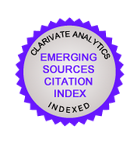The corrective diet of alimentary obesity model
https://doi.org/10.29235/1561-8323-2025-69-3-222-233
Abstract
Physiological studies were conducted to confirm the functional properties of new types of meat products intended for the nutrition of primary school children with an elevated body mass index. The recently developed high-quality meat products used in this study had reduced caloric content, with energy values 30 % lower than traditional products for primary school children, and no specific additives were present while maintaining product quality and appeal. The experiment revealed distinctive changes in parameters such as exploratory and locomotor reflexes, coordination, and endurance. A complete blood count and biochemical analysis were performed, and the metabolic activity of bifido- and lactobacteria in the large intestine was analyzed and evaluated both in physiological normalcy and after diet modification. The findings indicate that dietary correction is sufficient to initiate positive dynamics in counteracting adverse changes in the body caused by excessive consumption of high-calorie food.
About the Authors
S. G. PashkevichBelarus
Pashkevich Svetlana G. – Ph. D. (Biology), Head of Centre
28, Akademicheskaya Str., 220072, Minsk
S. A. Gordynets
Belarus
Gordynets Svetlana A. – Ph. D. (Agrarian), Head of the
Departmen
172, Partizansky Ave., 220075, Minsk
L. A. Chernyavskaya
Belarus
Chernyavskaya Lilia A. – Ph. D. (Engineering), Associate Professor, Head of the Sector
172, Partizansky Ave., 220075, Minsk
T. V. Kusonskaya
Belarus
Kusonskaya Tatsiana V. – Researcher
172, Partizansky Ave., 220075, Minsk
O. G. Tikhonovich
Belarus
Tikhonovich Olga G. – Ph. D. (Biology), Associate Professor, Leading Researcher
28, Akademicheskaya Str., 220072, Minsk
А. E. Pyzh
Belarus
Pyzh Anna E. – Ph. D. (Biology), Senior Researcher
28, Akademicheskaya Str., 220072, Minsk
Zh. A. Gladkova
Belarus
Gladkova Zhanna A. – Ph. D. (Biology), Associate
Professor, Senior Researcher
28, Akademicheskaya Str., 220072, Minsk
O. E. Soboleva
Belarus
Soboleva Olga E. – Researcher
28, Akademicheskaya Str., 220072, Minsk
Ya. D. Demina
Belarus
Demina Yana D. – Junior Researcher
28, Akademicheskaya Str., 220072, Minsk
J. V. Ksenevich
Belarus
Ksenevich Julia V. – Junior Researcher
28, Akademicheskaya Str., 220072, Minsk
A. V. Volkov
Belarus
Volkov Arseniy V. – Intern, Junior Researcher
28, Akademicheskaya Str., 220072, Minsk
D. P. Tokalchik
Belarus
Tokalchik Dmitry P. – Researcher
28, Akademicheskaya Str., 220072, Minsk
N. S. Serdyuchenko
Belarus
Serdyuchenko Nikolai S. – Corresponding Member,
D. Sc. (Medicine), Professor
28, Akademicheskaya Str., 220072, Minsk
References
1. WHO European Regional Obesity Report 2022. World Health Organization. Regional Office for Europe, 2022. Available at: https://iris.who.int/handle/10665/353747 (аccessed: 20 October 2024).
2. Solntseva A. V. Obesity in Children: A Teaching Aid. Minsk, 2019. 24 p. (in Russian).
3. Maskarinec G., Shvetsov Yu., Wong M. C., Cataldi D., Bennett J., Garber A. K., Buchthal S. D., Heymsfield S. B., Shepherd J. A. Predictors of visceral and subcutaneous adipose tissue and muscle density: The ShapeUp! Kids study. Nutrition, Metabolism and Cardiovascular Diseases, 2024, vol. 34, no. 3, pp. 799–806. https://doi.org/10.1016/j.numecd.2023.12.014
4. Peterkova V. A., Bezlepkina O. B., Bolotova N. V., Bogova E. A., Vasyukova O. V., Girsh Ya. V., Kiyaev A. V., Kostrova I. B., Malievskiy O. A., Mikhailova E. G., Okorokov P. L., Petryaykina E. E., Taranushenko T. E., Khramova E. B. Clinical guidelines «Obesity in children». Problemy endokrinologii = Problems of Endocrinology, 2021, vol. 67, no. 5, pp. 67–83 (in Russian). https://doi.org/10.14341/probl12802
5. Ustinova A. V., Belyakina N. E. Meat-based functional foods. Vse o myase [All about meat], 2010, no. 3, pp. 4–7 (in Russian).
6. Bunjat A. V., Spasenkova O. M., Karev V. E., Karavaeva A. V., Ivkin D. J., Kulikov A. N., Okovityi S. V., Kirillo- va N. V. Modification of a model of non-alcoholic fat liver disease in rats with a сombination of a hypercaloric diet and hypodynamia. Razrabotka i registratsiya lekarstvennykh sredstv [Drug development & registration], 2021, vol. 10, no. 4–1, pp. 155–165 (in Russian) https://doi.org/10.33380/2305-2066-2021-10-4(1)-155-165
7. Sadie-Van Gijsen H., Kotzé-Hörstmann L. Rat models of diet-induced obesity and metabolic dysregulation: Current trends, shortcomings and considerations for future research. Obesity Research and Clinical Practice, 2023, vol. 17, no. 6, pp. 449–457. https://doi.org/10.1016/j.orcp.2023.09.010
8. Alemasi A., Gu L., Zhou Y. Gut microbiota in the association between obesity and kidney function decline: a me tagenomics-based study in a rat model. Renal Failure, 2024, vol. 46, no. 1, art. 2328320. https://doi.org/10.1080/0886022X.2024.2328320
9. Agu F. U., Elendu M. U., Okechukwu H. K., Mbah C. A., Obioha K. C., Abali I. O., Iyare E. E., Nwachukwu D. C. Obesity related alterations in kidney function and plasma cytokines: Impact of sibutramine and diet in male Wistar rats. African Journal of Pharmacy and Pharmacology, 2022, vol. 16, no. 10, pp. 161–172. https://doi.org/10.5897/ajpp2022.5305
10. Komada M., Takao K., Miyakawa T. Elevated plus maze for mice. Journal of Visualized Experiments, 2008, vol. 22, pp. 1–4. https://doi.org/10.3791/1088-v
11. Minerbi A., Gonzalez E., Brereton N. J. B., Anjarkouchian A., Dewar K., Fitzcharles M.-A., Chevalier S., Shir Y. Altered microbiome composition in individuals with fibromyalgia. PAIN, 2019, vol. 160, no. 11, pp. 2589–2602. https://doi.org/10.1097/j.pain.0000000000001640
12. Dong M., Liang X., Zhu T., Xu T., Xie L., Feng Y. Reoxygenation mitigates intermittent hypoxia-induced systemic inflammation and gut microbiota dysbiosis in high-fat diet-induced obese rats. Nature and Science of Sleep, 2024, vol. 16, pp. 517–530. https://doi.org/10.2147/nss.s454297
13. Structural Brain Changes Associated with Overweight and Obesity / E. Gómez-Apo, A. Mondragón-Maya, M. Ferrari- Díaz, J. Silva-Pereyra. Journal of Obesity, 2021, art. 6613385. https://doi.org/10.1155/2021/6613385
14. Lyapina M. V., Vakhrushev Ya. M. The value of mucosal small intestine microbiotа in digestion and absorption disorders in metabolic syndrome. Terapevticheskii arkhiv = Therapeutic Archive, 2019, vol. 91, no. 11, pp. 37–42 (in Russian). https://doi.org/10.26442/00403660.2019.11.000300













































